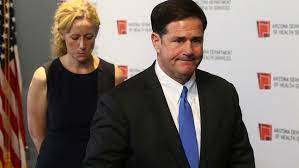Now that Pfizer has turned in their emergency use authorization application for their vaccine designed for kids between 5 and 11 years old, it’s crunch time to finish figuring out how we’re going to vaccinate kids fast next month. FDA’s advisory committee meeting is October 26th and CDC’s advisory committee is on November 2nd and 3rd, so it looks like we’ll get the green light on November 4.
This Pfizer pediatric vaccine is 1/3 of the dose that’s in the adult Pfizer vaccine but is otherwise the same. It’s coming in 100 dose packages (10 vials with 10 doses each), which is convenient. It’s still unclear whether doctors can spilt adult doses into thirds for kids. I haven’t been able to find out whether and how many pediatric vials will be ready by early November, so finding out whether adult Pfizer doses can be divided in thirds is important (hopefully FDA authorizes that practice). Being able to draw up pediatric size doses from adult vials will be absolutely critical if the supply of pediatric vials is inadequate or interrupted.
Note: While the Pfizer pediatric vaccine will initially be stored and transported at ultra cold temperatures (-90°C and -60°C) the vaccine can be stored at more reasonable temps for up to 2 weeks (before mixing) [ between -25°C and -15°C].
There are several models for getting kids vaccinated. The most desirable is for kids to get vaccinated at their medical home, like their pediatric office, community health center etc. Nationally, 70% of providers that are enrolled in the Vaccines for Children program are also enrolled to provide the COVID19 vaccine to kids. The ADHS hasn’t disclosed what percentage of VFC providers are enrolled in the COVID vaccine here in Arizona.
Whether pediatric offices (whether VFC providers or not) will have the resources and staff to get kids vaccinated fast is an open question. This is a very busy time of year for them and many are already understaffed. For those reasons, it’s important to leverage pharmacies and school and off site community clinics as distribution points.
Pharmacists in Arizona can administer any CDC recommended vaccine to kids 13 years old and up. They can also administer CDC recommended vaccines to kids between 6 and 13 years old with a prescription. But, a ‘Standing Order’ from the county health department can substitute for a formal prescription. [See ARS 32-1974 for the scope of practice for pharmacists re vaccines]. State law allows pharmacists to administer influenza vaccine to kids 3 years old and up without a prescription.
Note: A Standing Order can be used to authorize a pharmacist assess a patient’s immunization status and administer vaccine using a protocol approved by a qualified prescriber. Standing orders enable assessment and vaccination without a clinician examination or a prescription from the provider that issues the standing order.
In addition, ARS 32-1974(E) says that pharmacists can administer vaccines to anybody regardless of age during an ARS 36-787 public health emergency (which we are still in). That means that we can definitely use pharmacists to roll our COVID vaccine to all kids 5 years old and up, supplementing the vaccination that’ll will be happening in pediatric offices, community health centers and other clinics.
On the other hand, pharmacies have been super-busy with Pfizer booster shots and influenza vaccine in the last couple weeks. While the demand for Pfizer boosters will likely want at some point in November, the Influenza vaccine demand will remain brisk. Also, both Janssen (J&J) and Moderna have asked the FDA for booster EUAs (J&J is just another dose of the existing vaccine, Moderna is 1/2 dose of their existing vaccine). That authorization may come in at about the same time as the pediatric vaccine EUA for Pfizer, putting additional demand on pharmacies.
On top of that, Arizona pharmacies have been increasingly understaffed and many have been cutting back on the hours that they are open. Some patients are saying their medications aren’t being filled in a timely manner. It’s unclear how widespread the staffing issues are, but this article in the Arizona Republic by Stephanie Innes reports troubling problems that suggest pharmacies may not be a good Plan B site for vaccinations after all.
That brings me to using school-based and off site community clinics to roll out vaccine. It’s looking more and more like we will need community based clinics to get kids 5-11 years old vaccinated quickly in November. Because of the staffing issues and demand for boosters and flu shots at pharmacies, community clinics will be needed. The county health departments and/or the school districts will need to contract with community vaccinators to set those up.
The bottom line is that we need to get the plans in place now so that we’re ready for November 5 when it’ll be all hands-on-deck to meet the demand for getting elementary school kids vaccinated.
So far, we’ve heard very little from the Arizona Department of Health Services about what their plans are.
That needs to change, pronto.







